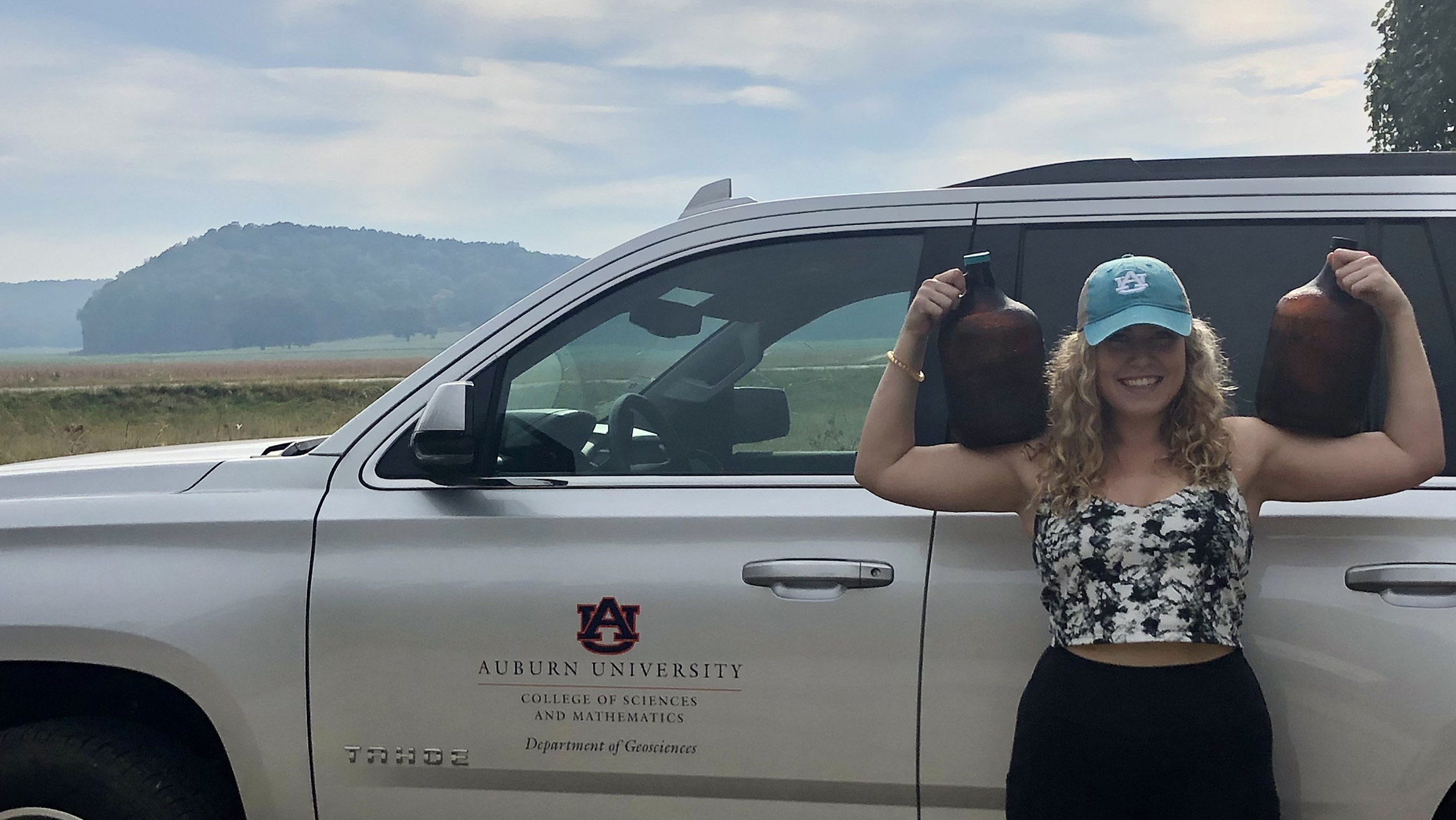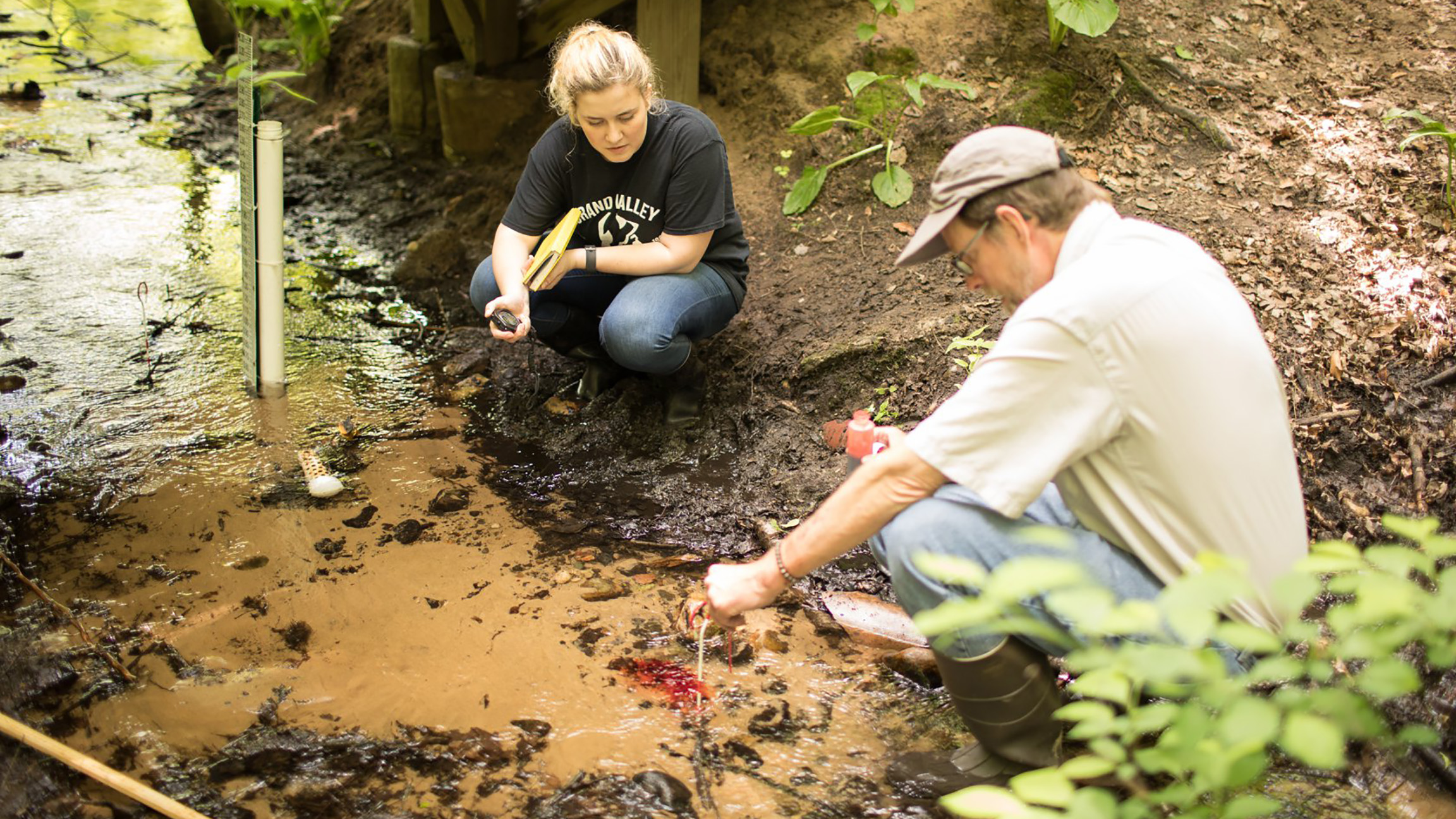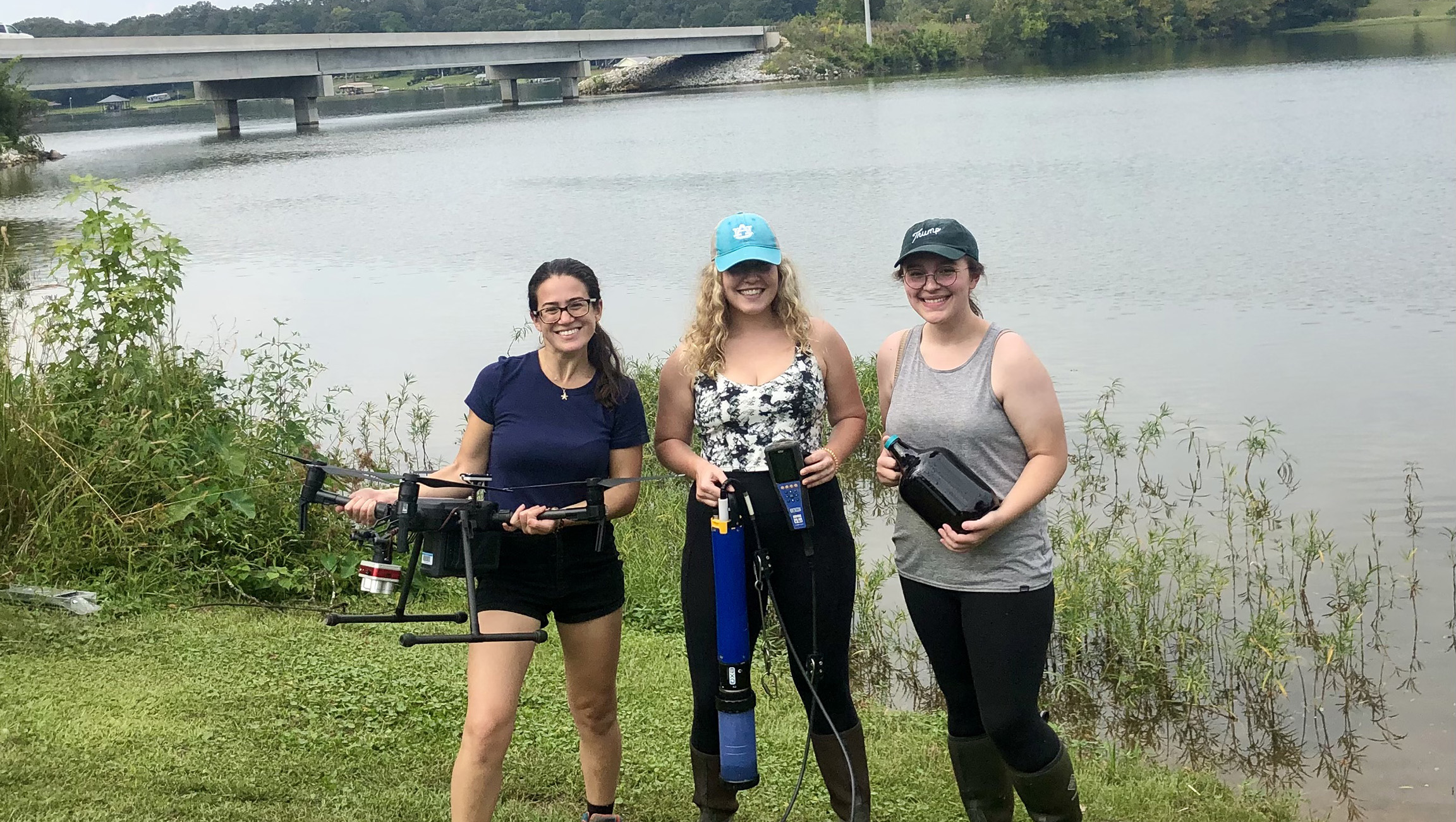
MEET ONE OF THE FACES OF THE FUTURE FOR THE GROWING FIELD OF HYDROGEOLOGY: ELLA LARSON.
Larson is a graduate student in the AU Geochemical Lab led by Dr. Ann Ojeda of the College of Science and Mathematics’ (COSAM) Department of Geosciences. Larson joined the lab in August 2020 after completing her B.S. in Geology at Grand Valley State University in Allendale, Michigan. Larson thrived in the small, but robust geology department at GVSU that offered an array of geology tracts from the more traditional petroleum and hard rock geology world as well as the emerging world of environmental geology, of which she was particularly interested.
Larson participated in undergraduate research during her time at GVSU and remembers, “my summer field work solidified my path in environmental geology.” Her work involved groundwater monitoring and estimating erosion by spring-fed streams. This project was funded by NASA (National Aeronautics and Space Administration) as part of the Michigan Space Grant Consortium.

Larson with her former advisor at Grand Valley State University, Dr. Patrick Colgan, estimating stream flow using a dye test for part of her undergraduate research. Photo Credit: Ella Larson
Larson attended the National Geological Society of America Conference as a Junior and Senior where she initially discovered Auburn University and the many opportunities the Department of Geosciences had to offer for graduate school. Following the event, she contacted Dr. Ojeda and the rest is history.
For Larson’s M.S. thesis, she studied E. coli contamination in Choccolocco Creek using human proxies and sterols. Larson was able to determine much of her thesis methodology, including sampling frequency, location, laboratory procedures, and the specific method for E. coli testing.
Larson’s work is based upon the assumption of defined human signatures. This presumes any pharmaceuticals or personal care products measured in water come from a human source such as a septic tank or wastewater treatment. This makes them useful for tracking human sources of E. coli contamination. For her research, Larson utilized the presence of ibuprofen, caffeine, acetaminophen, and sterols (a lipid that maintains structure in eukaryotic cells) as human signatures.

Larson collecting water sample on Choccolocco Creek with undergraduate field technician, Sidney Millner. Photo Credit: Ella Larson
Furthermore, Larson explained that certain water quality parameters can be utilized to determine source. Septic tank signatures will be enriched in ammonium due to their anoxic (lacking oxygen) nature and copper due to chemical septic cleaning solutions, while a wastewater treatment plant signature will be more oxidized (containing oxygen). Therefore, Larson also measured ammonia nitrogen and nitrate nitrogen as well as metals including copper as additional signatures.
Larson and her field technician, Sidney Millner – a Senior in the AU Environmental Sciences program, sampled monthly from April to September at 9 sites along Choccolocco Creek. They collected 1 gallon of water for lab analyses for human signatures as well as 1-2mL triplicate water samples for E. coli testing using Coliscan. Currently, Larson has completed her field work and is running final analyses and interpretation for her upcoming thesis defense.

Dr. Edna Fernandez-Figueroa (left) joined Larson and Millner during some of their field work to investigate the effectiveness of drone imagery at some of their sampling sites. Photo Credit: Ella Larson
When asked what the highlight of her graduate school experience was thus far, Larson responded, “There has been so much I’ve enjoyed about grad school: I’ve gained so much confidence from managing my research project and truly enjoyed interacting with community members in the field and meeting so many great people here at Auburn.”
During her graduate school experience, she has also served as the Vice President of the Graduate Water Resources Club, an organization founded in 2020 by AU graduate students across multiple colleges on campus looking for an outlet to share water-related research, professional development, and fellowship.
Larson’s anticipated graduation date is Spring 2022. After graduation, she hopes to gain some industry experience, more specifically, conducting environmental consulting as a hydrogeologist. Larson also is not ruling out a PhD. She has especially enjoyed being a Teaching Assistant during graduate school.
Follow Larson and her lab mates research, on the AU GeoChemLab’s Instagram.
